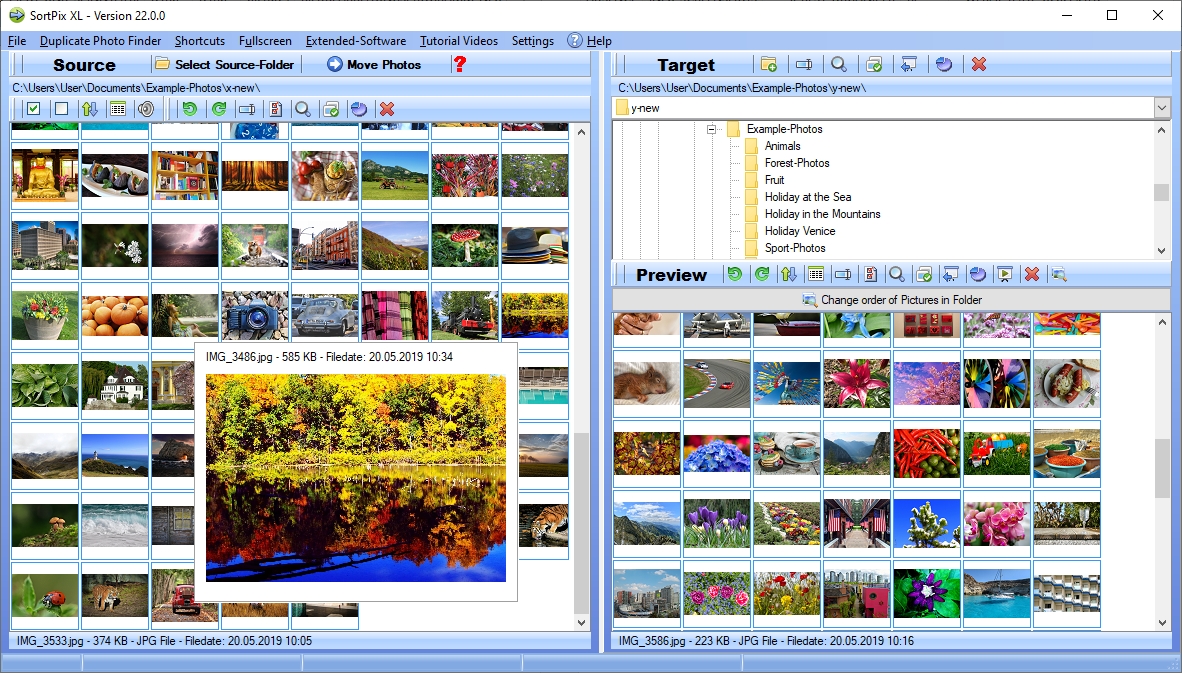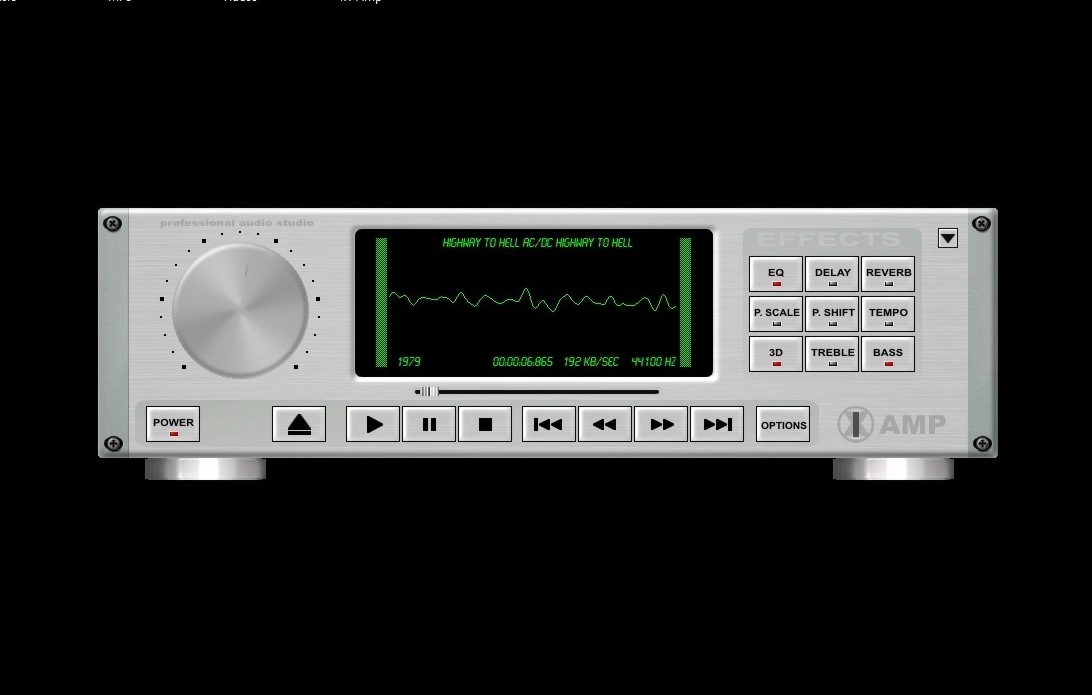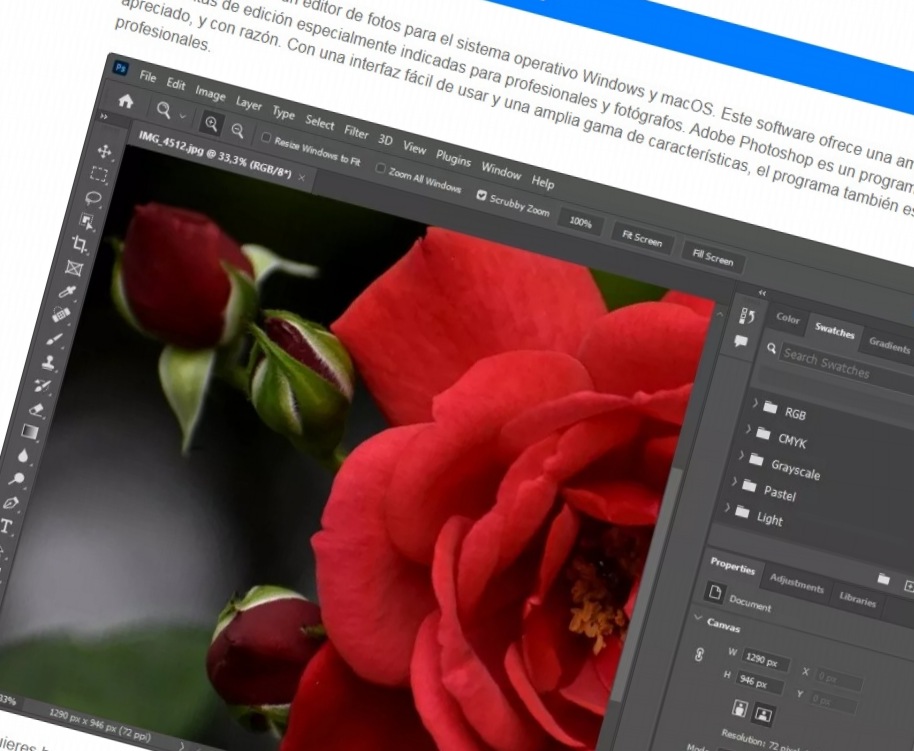I erans era är en fotoredigeringsprogram ovärderlig för att få det bästa ut av dina fotografier.
Vårt fotoredigeringsprogram är en verklig skatt för dem som vill frigöra sin konstnärliga frihet. Oavsett om du är en professionell fotograf eller bara vill förbättra dina semestrfoton, ger vårt fotoredigeringsprogram dig verktygen för att expandera dina förstklassiga gränser.
Datorns tid för fotografering är rik på färger och detaljer som ofta förbises. Du kan justera ljusstyrka och kontrast för att ta bort mörka skuggor och framhäva detaljer i högdagrar. Med bara några klick kan användare öka eller minska färgmättnaden för att ändra stämningen i ditt foto. Vår programvara ger dig verktygen för att göra dina idéer till verklighet.
Från klassiska svartvita filter till konstnärliga effekter som akvarell eller oljemålning kan användare skapa fenomenala utseenden med fotoredigeringsprogrammet. Dessa filter är inte bara fördefinierade utan kan också anpassas så att du har kontroll över det slutliga resultatet.
Med lager kan du redigera olika element på din bild oberoende av varandra. Detta gör det möjligt för dig att lägga till text, placera objekt eller tillämpa olika effekter på enskilda delar av din bild utan att ändra originalbilden. Med denna flexibilitet kan användare skapa komplexa kompositioner och förverkliga sina fantastiska idéer.
Användningen av fotoredigeringsprogrammet är enkel och intuitiv, även om du aldrig har arbetat med bildredigering tidigare kommer du snabbt att komma igång. Menystrukturen är användarvänligt utformad och har ett brett utbud av verktyg som är lättillgängliga. Vår programvara har också handledningar och tips för att underlätta din start.
Sammanfattningsvis har detta fotoredigeringsprogram en otrolig mångfald av funktioner och möjligheter att tillämpa individuella effekter på dina egna foton. Oavsett om du är professionell fotograf, hobbyfotograf eller sociala medieanvändare är vår programvara den perfekta lösningen. Förvandla dina bilder till unika proffsfoton och frigör din konstnärliga frihet med vårt fotoredigeringsprogram.
Särskilt och speciellt med fotoredigeringsprogrammet FotoWorks XL 2 är:
Fotoredigeringsprogrammet FotoWorks XL 2 utmärker sig genom distinkta funktioner som gör det till ett enastående verktyg för bildredigering. Här är två exempel:
Skapa målningar som oljemålningar, airbrush, kopparstick, etc.:
En särskild funktion hos FotoWorks XL 2 är förmågan att arrangera digitala foton i fantastiska målningar som efterliknar stilen och tekniken hos traditionella mästerverk. Med den här funktionen kan du skapa oljemålningar, airbrush, porträtt, kopparstick och andra konstformer för att ge dina foton en fenomenal touch.
Du kan anpassa intensiteten och stilen hos olika målningstekniker för att få önskat resultat. Detta är inte bara ett användbart verktyg för konstnärer och grafiska designers, utan också ett roligt sätt för hobbyfotografer att försköna sina bilder och skapa något speciellt.
Fotoredigeringsprogram och bild-i-bild ritfunktion med masker och transparens:
En annan unik funktion hos FotoWorks XL 2 är möjligheten att infoga separata bilder i dina huvudbilder och samtidigt använda masker och transparens. Denna funktion gör det möjligt för användare att skapa idealiska bildkompositioner genom att integrera helt olika element i ett huvudfoto enligt specifika önskemål.
Användningen av transparens och klippmasker hjälper till att arrangera övergångarna mellan de infogade bilderna och huvudbilden. Detta öppnar oändliga möjligheter för bildskapande, vare sig det är för collage, montage eller egna projekt.
Blixtlösa trollformler utan biverkningar – Vårt fotoredigeringsprogram tar bort röda ögon lekande lätt
Till vår lycka är detta fotoredigeringsprogram en funktionell lösning för att enkelt ta bort denna störande effekt.
Röda ögon är ett vanligt problem inom fotografi som orsakas av reflekterat blixtljus. När blixten träffar ögat reflekteras ljuset från blodkärlen i retina, vilket leder till den karakteristiska röda färgtonen. Detta fenomen kan inträffa även med professionella kameror och dyra blixtutrustningar, särskilt när omgivningsljuset är begränsat.
Konsekvenserna av röda ögon på bilder kan vara frustrerande. Användare kan förvanska ansiktet på personen på bilden och påverka helhetsintrycket av bilden. Detta är irriterande när det gäller grundläggande minnesbilder eller när man försöker skapa professionella porträttbilder.
Utmaningen med att ta bort röda ögon
Manuell korrigering av röda ögon kan vara tidskrävande och svår, särskilt om många bilder är drabbade. Det kräver precision och tålamod för att bearbeta varje öga individuellt. Risken för fel och oönskade förändringar i bilden är hög om man inte har de perfekta verktygen och färdigheterna.
Många applikationer kan ändra den naturliga ögonfärgen eller lämna suddiga områden runt ögat, vilket leder till ett ofullkomligt resultat.
Fotoredigeringsprogram och lösningen för röda ögon
Vårt fotoredigeringsprogram har en produktiv och effektiv lösning för problemet med röda ögon.
Funktionsprincipen för vårt fotoredigeringsprogram är lika perfekt som enkel. Det upptäcker automatiskt röda ögon i dina bilder och justerar färgerna noggrant för att eliminera den röda färgtonen. Resultatet är en bild som ser ut som om den togs utan blixt, utan att ändra den naturliga ansiktsuttrycket. Du kan anpassa intensiteten av borttagningen efter dina önskemål för att säkerställa att slutresultatet passar perfekt till din bild. Detta garanterar en individuell redigering som smidigt integreras i din arbetsflöde.
Fördelarna med detta fotoredigeringsprogram
- För det första sparar du tid och ansträngning eftersom den automatiska upptäckten och korrigeringen betydligt accelererar processen. Du behöver inte längre kämpa dig igenom hundratals foton för att manuellt redigera varje öga.
- För det andra får du perfekta resultat. Vår programvara ser till att ögonen på dina fotografier ser naturliga och uttrycksfulla ut utan att ta bort glans eller skärpa. Detta är särskilt viktigt när det gäller porträttbilder där ögonens uttryck spelar en central roll.
- För det tredje ger vårt fotoredigeringsprogram möjlighet att fokusera på andra aspekter av fotoredigering. Du kommer att kunna förverkliga dina idealiska idéer och applicera andra justeringar och effekter på dina bilder samtidigt som du kan lita på att borttagningen av röda ögon görs enkelt.
Röda ögon på foton behöver inte vara irriterande längre. Med fotoredigeringsprogrammet kan du enkelt ta bort röda ögon och skapa perfekta bilder som behåller ögonens naturliga uttryck. Säg adjö till oönskade röda ögon och säg hej till perfekta foton. Upplev lättheten i bildredigering med vårt fotoredigeringsprogram och njut av det slutgiltiga resultatet – strålande bilder.
Collagekonst för alla – Fotoredigeringsprogrammet gör det enkelt
Med fotoredigeringsprogrammet blir skapandet av fotocollage lekande lätt för alla, oavsett din erfarenhetsnivå eller färdigheter inom fotoredigering.
Fotocollage är en speciell form av visuell kommunikation. De tillåter oss att uttrycka våra livsbilder, idéer och känslor på ett sätt som enskilda bilder ensamma inte kan. Ett fotocollage kan berätta en hel historia, dokumentera en resa eller helt enkelt fånga olika sidor av ett ögonblick.
Mångfalden av möjligheter med collage är föredömlig. Användare kan välja bland en blandning av foton, text, grafiska element och filter för att skapa en extraordinär visuell komposition. Fotocollage kan vara nostalgiska, humoristiska, konstnärliga eller informativa – din fantasi känner inga gränser.
Utmaningarna med att skapa fotocollage
Trots deras extraordinära möjligheter kan fotocollage vara en utmaning, särskilt för de som har lite erfarenhet av fotoredigering. Att välja lämpliga bilder, placera och arrangera element samt applicera effekter kan vara tidskrävande och frustrerande. En annan utmaning vid skapandet av fotocollage är tillgången på lämplig programvara. Många program är antingen för knepiga för nybörjare eller erbjuder inte tillräckligt med smarta verktyg för erfarna användare.
Fotoredigeringsprogram och skapande av fotocollage
Fotoredigeringsprogrammet har utvecklats specifikt för att göra skapandet av fotocollage tillgängligt för alla användargrupper. Oavsett om du är en grafisk designer eller nybörjare inom fotoredigering, innehåller vår programvara de funktioner du behöver för att skapa förstklassiga fotocollage. Gränssnittet för vårt fotoredigeringsprogram är användarvänligt och intuitivt utformat. Du behöver inte gå igenom komplicerade handledningar eller läsa manualer i timmar. Allt du behöver finns inom räckhåll, och du kan omedelbart börja använda din kreativitet.

Lättheten av att skapa fotocollage
Att skapa fotocollage med vårt fotoredigeringsprogram är otroligt enkelt. Användare kan helt enkelt välja bilder och dra och släppa dem i sitt projekt. Med stöd av ett stort antal mallar och layouter kan du ordna och anpassa dina foton efter dina önskemål. Fotoredigeringsprogrammet har också ett brett utbud av filter, effekter och textalternativ som låter dig anpassa dina collage. Användare kan justera färger, öka kontraster och lägga till text för att förmedla ditt meddelande. Alternativen är oändliga, och du bör skapa dina fotocollage så som det bäst passar din vision.
Vår programvarus flexibilitet
Fotoredigeringsprogrammet utmärker sig också genom sin flexibilitet. Användare kan skapa fotocollage för olika ändamål, vare sig det är för personligt bruk, för sociala medier, för marknadsföring eller för professionella projekt. Vår programvara har funktionerna och kvaliteten för att säkerställa att dina collage alltid ser professionella ut. En annan höjdpunkt med fotoredigeringsprogrammet är möjligheten att spara och fortsätta arbeta med dina projekt när som helst. Du kan arbeta med ditt fotocollage när det passar dig, utan att förlora framsteg. Detta är särskilt användbart när du skapar komplexa collage med många detaljer.
En liten lista med andra fantastiska funktioner i fotoredigeringsprogrammet inkluderar:
Fotoredigeringsprogrammet FotoWorks XL 2 erbjuder en bred palett av imponerande funktioner som låter användare redigera och försköna foton på ett kreativt och professionellt sätt. Här är några av dessa fantastiska funktioner:
- Sepia-Effekter: Med sepiaeffekter kan du omvandla foton till den varma, bruna tonen som ofta associeras med historiska fotografier. Det ger dina bilder en nostalgisk atmosfär.
- Ljus-Effekter: Ljuseffekter i fotoredigeringsprogrammet låter dig framhäva ljuskällor i dina foton eller lägga till konstgjort ljus för att skapa stämning och atmosfär.
- Popkonst-Effekter: Popkonsteffekterna i fotoredigeringsprogrammet påminner om den färgglada och lekfulla konstnärliga rörelsen popkonst. Du kan förvandla foton till livliga och grafiska konstverk.
- Vintage-Effekter: Med vintageeffekter kan du ge foton en retrolook som påminner om förgångna tider. Det kan inkludera en blekt färgton eller en vinjett i stil med gamla fotografier.
- Reliefeffekter: Reliefeffekter ger dina foton en tredimensionell textur och djup, vilket gör dem mer levande och plastiska.
- Vignetteffekter: Vignetteffekter låter dig fokusera på huvudmotivet i dina foton genom att mörka eller ljusa upp kanterna med fotoredigeringsprogrammet.
Kreativitetens frihet
Vårt fotoredigeringsprogram låter dig fullt ut förverkliga dina imponerande idéer. Du bör formge dina fotocollage enligt din stil och personlighet. Oavsett om du vill dela dina reseupplevelser, familjemoments eller konstnärliga visioner gör vår programvara det enkelt.
Fotocollage är ett underbart sätt att göra dina foton mer imponerande och berätta historier på ett visuellt sätt. Med fotoredigeringsprogrammet är skapandet av fotocollage enklare än någonsin, och du kan implementera dina idéer utan begränsningar.
Upptäck datorvärlden av collagekonst och använd vårt fotoredigeringsprogram för att dela dina distinkta och igenkännliga berättelser. Oavsett om du är en erfaren designer eller nybörjare finns vår programvara här för att göra dina fotocollagedrömmar till verklighet. Uttryck dina färdigheter och njut av friheten att skapa med detta fotoredigeringsprogram.
Fotoredigeringsprogrammet och RAW-filer
En annan stor fördel med detta fotoredigeringsprogram är möjligheten att redigera RAW-filer. RAW-filer är okomprimerade bildfiler som innehåller all information och detaljer i bilden. Detta möjliggör en mycket djupare redigering och anpassning än JPEG-filer. Med fotoredigeringsprogrammet kan du öppna och redigera RAW-filer för att få ut det mesta av dina bilder.
Du kan skapa vintage-look för att ge dina bilder en tidlös känsla eller använda abstrakta effekter för att designa dina foton till fotokreationer. Fotoredigeringsprogrammet ger dig verktygen för att släppa loss din produktivitet och få oöverträffade resultat.
För de som vill etablera sig inom fotograferingens värld ger vårt fotoredigeringsprogram också en utmärkt möjlighet att förbättra dina färdigheter. Du kan optimera dina foton samtidigt som du lär dig hur olika justeringar och effekter fungerar. Vår programvara ger även möjlighet att spara inställningar (presets), så att du enkelt kan återställa dina favoritinställningar för framtida projekt.
Detta fotoredigeringsprogram är också perfekt för sociala medieentusiaster som vill försköna sina bilder för plattformar som Instagram, Facebook och Twitter. Med fotoredigeringsprogrammets filter kommer du att förbättra dina bilder och se till att de sticker ut i sociala medier. Dina följare kommer att älska dina utmärkta inlägg.



 Best photo organizing software
Best photo organizing software Mejor editor de fotos
Mejor editor de fotos Beste fotobewerkingsprogramma
Beste fotobewerkingsprogramma Melhor editor de fotos
Melhor editor de fotos Meilleur logiciel tri photo
Meilleur logiciel tri photo